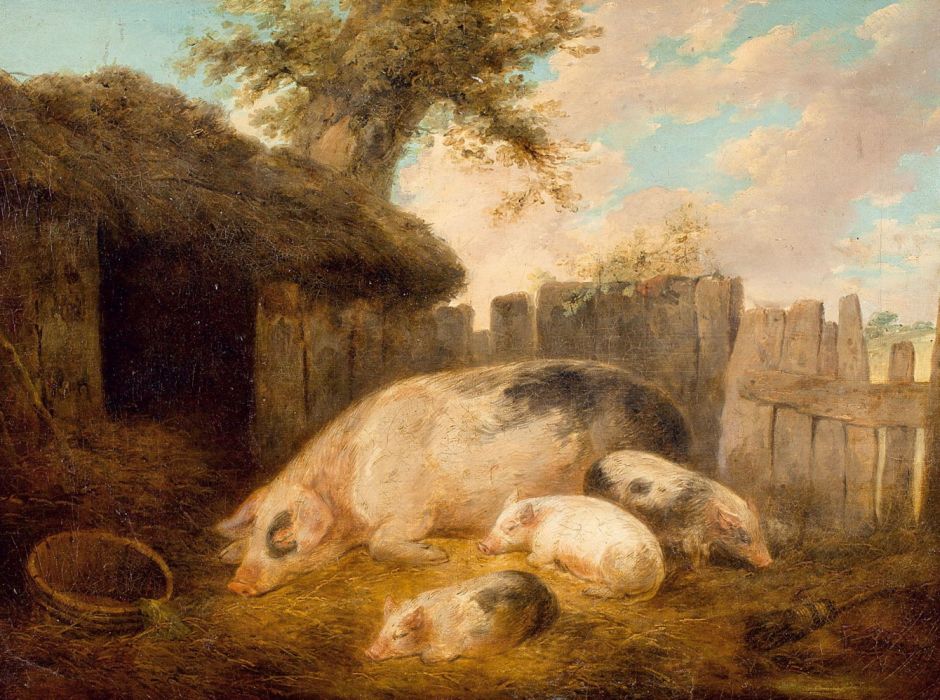In European and North American painting, there’s no shortage of horses, cattle or sheep. Among the common domestic animals that appear least, though, is the pig. This weekend I show a selection of paintings featuring these childhood favourites, in this article in their own right, and tomorrow as part of narrative.
After the Renaissance, with the development of animal painting as a sub-genre, the domestic pig soon started to appear in portraits of livestock.

Paulus Potter’s Two Pigs in a Sty (1649) shows two hirsute pigs at rest inside. Many of the older breeds of pig were more hairy than modern varieties, and Potter has painted their long coats faithfully, as well as skilfully lighting the face of the sow sat on her haunches.

Potter’s Cattle in the Meadow, from 1652, develops the effects of light together with the early autumn season almost to the point of being impressionist in its use of colour. In addition to the cattle, this is enhanced with a sow and her piglets in the right foreground, and exuberant lichen growth on the split tree-trunk by them.
At the turn of the eighteenth to nineteenth centuries, British pastoral artists painted more portraits.

Of the animals found on farms, George Morland appears to have had strongest feelings for pigs. In Front of the Sty (1793) shows what’s probably a Gloucestershire Old Spot, a sow asleep with three of her well-grown piglets. This breed is predominantly white, with black spots or patches, and was once popular throughout Britain, but is now considered to be critically endangered, with less than a thousand breeding sows registered in Great Britain.

Morland’s undated Study of Pigs uses a similar composition and breed, with perceptive detail. The trunk of the tree in the background appears to bear lungwort lichen of the species Lobaria pulmonaria, which is now extinct through the south and east of the UK, but was then commonplace.

James Ward’s Gloucestershire Old Spot (1800-1805) gives an idea as to how massive pigs of this breed can become. This adult probably weighs in excess of 500 pounds, or a quarter of a tonne, and could quite appropriately be termed a massive porker. On the left, in the distance, a large litter of piglets are feeding at a wooden trough.

The Straw Yard (1810) is a wonderfully loose sketch in which Ward brings together the dereliction in the countryside with a menagerie of farm animals, including horses, two donkeys, chickens, and an abundance of pigs and piglets.
Pigs were also common across other European countries at this time.

Gustave Courbet’s Peasants from Flagey Back from the Fair (1850) shows a group of countryfolk driving oxen and other animals along a country road by the light of the setting sun, near the artist’s home town of Ornans in the east of France. These aren’t the rural poor by any means, but middle class farmers. In the right foreground, a man with a black eye holds an umbrella and lets his small pig lead the way.

Ludwig Knaus’s painting of Mud Pies from 1873 shows a group of children in the evening, near Dusseldorf, Germany, who are enjoying play in and with the mud, which is no deterrent to the many small pigs behind them.

In Mykola Kuznetsov’s Pigs from 1889 there are several large pigs being taunted by a dog, under a ramshackle dovecote.

